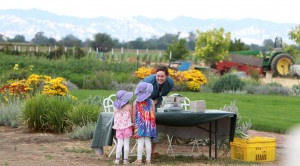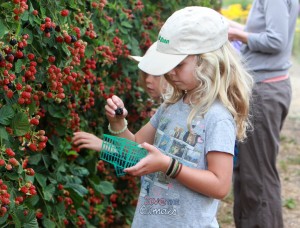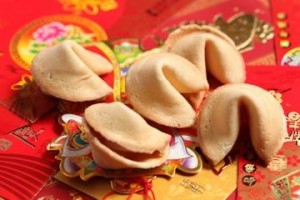 In October 2014, a tour guide in San Francisco went on a racist rant about the very people that were the subject of her tour: Chinese immigrants living in Chinatown. While most people, especially those in the media, focused on what was actually said, racism is nothing new. As Chang Jun (2014) from the San Francisco Journal put it, “sometimes people just lack the education and experience to comprehend and sympathize with the sufferings of others”. What’s more disturbing to me, however, is that these stereotypes and racist comments elicited laughter and sneers from her tourists that day.
In October 2014, a tour guide in San Francisco went on a racist rant about the very people that were the subject of her tour: Chinese immigrants living in Chinatown. While most people, especially those in the media, focused on what was actually said, racism is nothing new. As Chang Jun (2014) from the San Francisco Journal put it, “sometimes people just lack the education and experience to comprehend and sympathize with the sufferings of others”. What’s more disturbing to me, however, is that these stereotypes and racist comments elicited laughter and sneers from her tourists that day.
Reactions such as these reveal the kinds of ‘hidden’ racist views and attitudes that are still prevalent in this country today. An excellent example is that of the heritage tourism industry in Charleston, SC. For most of its existence, tourism operators have either omitted any mention of black culture and history or have included only a minute portion of their contributions to the region. Even in recent years, when black heritage is included in a tour, it’s oftentimes incorrect or inauthentic (for example the proportion of African Americans in 1720 Charleston), approached timidly or used as a defense mechanism against Charleston’s associations with slavery (Cox, 2012). These reactions also symbolize the danger that heritage sites run into when they are more interested in entertaining tourists rather than educating them. This doesn’t mean that all heritage tour operators are racist or hold racist views. However, the decisions made by tourist companies and operators about what tourists should see and their interpretations of what and who is seen oftentimes discriminate against the very populations that they are learning about and observing.
In Chinatown, for example, while the cultural heritage of the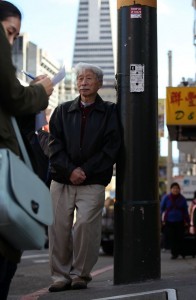 Chinese community is mentioned in their advertisements, walking tours continue to emphasize the stereotypical views that are often found in the media. For example, a company called Viator offers walking tours of Chinatown that encourage tourists to “sample fortune cookies…step inside an herbal pharmacy….and visit an authentic Buddhist temple” (Viator). The same walking tour also claims to provide “the inside scoop” of Chinatown’s “private clubs and secret societies” (Viator). In an interview by Bek Phillips (2013), Philip Choy, author of the book “San Francisco Chinatown”, sees this ‘inside scoop’ as a means of promoting
Chinese community is mentioned in their advertisements, walking tours continue to emphasize the stereotypical views that are often found in the media. For example, a company called Viator offers walking tours of Chinatown that encourage tourists to “sample fortune cookies…step inside an herbal pharmacy….and visit an authentic Buddhist temple” (Viator). The same walking tour also claims to provide “the inside scoop” of Chinatown’s “private clubs and secret societies” (Viator). In an interview by Bek Phillips (2013), Philip Choy, author of the book “San Francisco Chinatown”, sees this ‘inside scoop’ as a means of promoting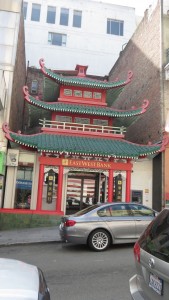 Chinatown as “a dark, sinister place” in order to earn money from unwitting tourists. In fact, during the interview Mr. Choy points out that the only authentic part of the pagoda of the building under which they stood were the colors; the pagoda itself was inauthentic.
Chinatown as “a dark, sinister place” in order to earn money from unwitting tourists. In fact, during the interview Mr. Choy points out that the only authentic part of the pagoda of the building under which they stood were the colors; the pagoda itself was inauthentic.
Authentic portrayals of cultural regions like Charleston and Chinatown are under attack by tourism operators who are willing to use staged authenticities and inauthenticities to cater to what they believe tourists want. Some might place the blame on popular media. Surely movies like Gone With the Wind, with its images of the Antebellum South, and Big Trouble in Little China, with its smoky back alleys and dark figures, have created within tourists expectations of what they might find. However, a large part of the blame must also be shouldered by the tourist industry’s desire for economic gain at the expense of an education based on authentic cultural history and heritage. If we’re really serious about ending the type of discrimination and racism found in the viewpoints of people like the ranting tourism operator, then a re-examination of heritage tourism’s policies and responsibilities to the larger culture might be in order.
Cox, Karen L. Destination Dixie: Tourism and Southern History. University Press of Florida, 2012.
Jun, Chang. 2014. “Racism Takes a Bus Ride Through SF’s Chinatown.” ChinaDaily USA. Accessed March 2, 2015, http://usa.chinadaily.com.cn/opinion/2014-10/29/content_18818222.htm.
Phillips, Bek. 2013. “Philip Choy Explores Real Chinatown.” SFGate. Accessed March 2, 2015, http://ww.sfgate.com/books/article/Philip-Choy-explores-real-Chinatown-4180193.php
Viator. “San Francisco Walking Tour.” Accessed March 2, 2015, http://www.viator.com/tours/San-Francisco/San-Francisco-Chinatown-Walking-Tour/d651-2326WALK
